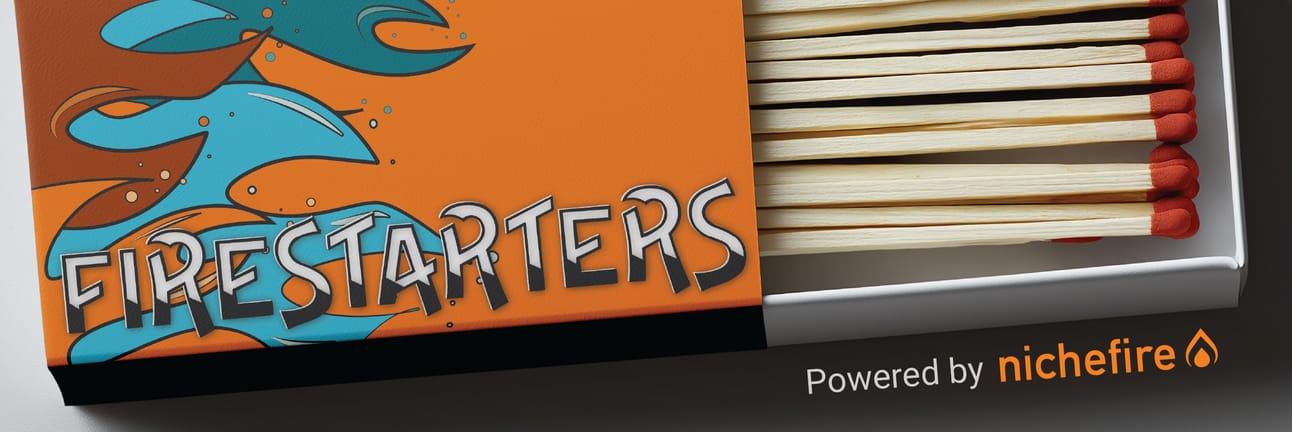- FireStarters - The Nichefire Newsletter
- Posts
- 5 Truths About Cultural Foresight
5 Truths About Cultural Foresight
(They may not be what you think)

Welcome back to FireStarters
Your weekly spark of cultural insight, designed to power sharper innovation strategy.
In this edition, we're cutting through the noise around cultural foresight and answering a simple question: what does it really take to predict consumer behavior today?
For product development and consumer insights teams, it’s not enough to track mentions or see what’s trending. True foresight means understanding the deeper shifts in behavior, beliefs, and lifestyles that are reshaping markets.
That’s why we’re sharing 5 essential truths about the future of cultural foresight—so your team can move from reacting to leading. Let’s get into it.
The five truths:
Finding mentions is only a fraction of the job
AI’s power is in understanding, not just output
To predict consumer behavior, you have to understand the narrative
It's not about whether something’s popular—it’s about what it changes
You can start predicting culture—right now
Truth 1: Finding mentions is only a fraction of the job
Keyword-based listening. Big ass Boolean queries. They’re an important part of a social intelligence framework - but they can’t give teams predictive insights on their own.
For consumer insights and product teams, these tools can find conversations—but require manual deep-dives to surface anything actionable.
Context, relevance, and emerging patterns are the data points that actually allow you to predict consumer behavior.
And with traditional tools, that analysis is left to you. That means:
Innovation depends on how quickly the data can be manually analyzed
Teams spend more time hunting for insight than building on it
Predictive insights get delayed, product innovations hit the market late

A social listening tool like Talkwalker can find conversations, and even analyze sentiment, but it won’t tell you the deeper cultural meaning behind those conversations—or what they signal about where consumer behavior is heading.
Truth 2: AI’s power is in understanding, not just output

AI isn’t just for creating content—it’s for understanding the cultural signals that shape consumer behavior. It can uncover patterns across thousands of conversations in seconds, delivering clarity that once took teams weeks.”
Don’t think about AI the way LinkedIn influencers do. It’s not just about churning out social media posts, auto-generating graphics, or sending cold emails faster.
The real power of AI is in what it can understand. Imagine trying to comb through 5,000 social posts about estrogen in food to uncover patterns, sentiment shifts, and emerging narratives—it could take your team weeks.
But with AI tools, that same analysis can happen in seconds. It’s not just about speed—it’s about seeing the full picture, faster than humanly possible.
Truth 3: To predict consumer behavior, you have to understand the narrative
Because understanding why something is happening in culture is happening—not just that it is—is what turns data into direction.
Nichefire’s Trend Summary view analyzes all the relevant consumer conversations around a topic—across platforms—and distills them into a clear, strategic narrative. It connects the dots instantly, so insights and product teams can skip the hours (or weeks) of manual research.
For example, you might spot “pet jobs” as an emerging topic. But Trend Summary reveals what’s really happening: a deeper cultural shift toward treating pets like family—and the growing demand for products and services that reflect that mindset.

Want to see how Nichefire’s Trend Summary works? Talk to us about seeing the platform and getting access →
Truth 4: It's not about whether something’s popular—it’s about what it changes
Nestlé’s Vital Pursuit line is the perfect case study for cultural foresight. They weren’t just looking to track positive or negative sentiment around GLP-1 weight loss drugs—or even to confirm whether they were here to stay. What they really wanted to understand was: how is this shift changing the way people eat—and what does that mean for the future of food?
With Nichefire, their Consumer Insights team was able to detect and analyze emerging conversations around Ozempic and Wegovy. But more importantly, they tracked how those conversations shifted over time—from curiosity to lifestyle change.

The result?
Nestlé launched Vital Pursuit, a new frozen food brand tailored to GLP-1 users—offering portion-aligned, high-protein meals to support new health routines.
Truth 5: You can start predicting culture—right now
What if you could start putting the 4 truths above into practice—today?
Nichefire’s GPT-powered cultural tools give you the ability to analyze emerging conversations from Reddit, forums, and beyond—instantly.
It's not just about seeing what people are saying—it's about finding the meaning in what they're saying.
These Cultural GPTs are a way to experience a fraction of what Nichefire’s full platform offers, all within a familiar, conversational interface. Start spotting behavioral shifts, decoding sentiment patterns, and uncovering new opportunities—right where culture happens.

Want more? Nichefire CEO Michael Howard has you covered
Michael publishes “CultureShock” weekly, with consistent insights into cultural movements that will shape the future of consumer behavior. If you’re not subscribed, you’re missing out.
 | Our recommendation? Start on his recent post on beauty culture. Here’s the setup: We’ve been looking at three trends in beauty: Clean Girl, TikTok Micro-Trends, and Coquette. Together, they paint a picture of what beauty means in 2025. More importantly, they reveal what consumers are craving: wellness, speed, and nostalgia, all in one swipe. Check it out today. Read more in Culture Shock → |
That’s the curtains on volume 6. We’ll see you next week with more of the same.